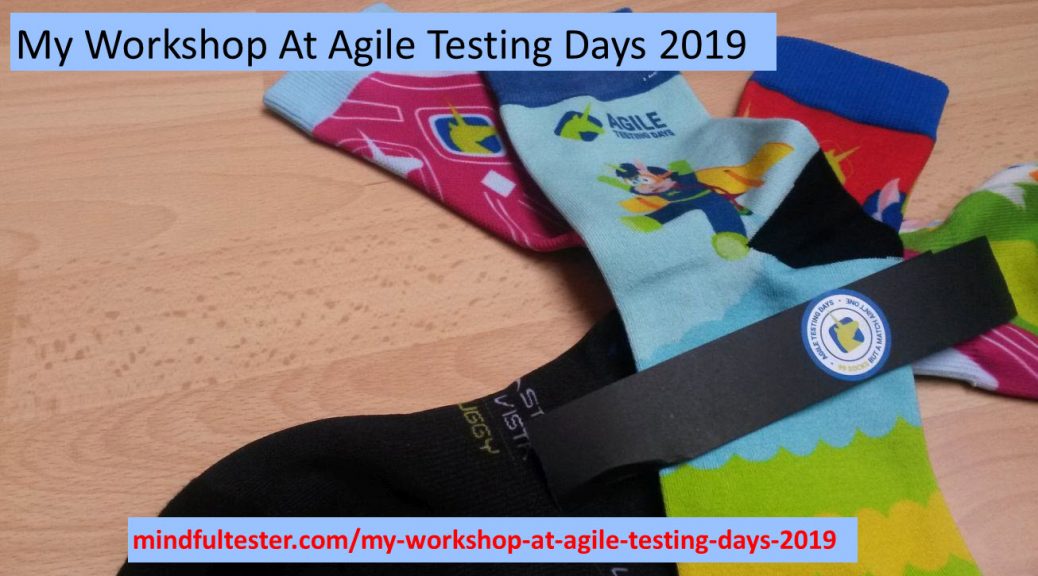Preparation costs energy
After all the last weeks’ changes I could finally start my actual workshop.
I felt an energy drop and watched an expectant audience from a far distance. I used my automatic pilot for the intro.
While nobody moved, my distance to the audience became closer while I was talking.
Boom.
I was back in the room.
First test session
For me the most elementary things of Exploratory Testing are
- Charter
- Test idea
- Explore
- Debrief
For this I created a heuristic. CTED is pronounced as See TED. If I need some inspirational talks, then I go to Ted.com.
A charter is a short instruction for a test session.
Explore < target >
with < resources >
to discover < information>
This template of Elisabeth Hendrickson is compact and informative. As mentioned in Explore it.
For the interested people test charter is not found in the index, charter is.
In my workshop the Target was a website. But it is still quite big. Resources is often a web browser.
Information was focused on privacy. General Data Protection Regulation or GDPR, an European privacy law, is still quite huge, so the next step was to select some articles of GDPR.
Ik picked 2. 1 lead to the following question:
Does the website ask consent to gather information?
A charter can be quite abstract. A test idea can be used to focus on a feature, window, or term used in the website to explore.
Consent is not frequently used, but which words are used in a web site?
Privacy, cookies, permission, private data, etcetera.
Using the charter and test ideas it is possible to explore the web site, whether consent is actually asked from the user.
During the debrief the attendees shared their information, which could be used for the following test session.
Background information first test session
For the basic structure of the test session I used the heuristic DiSSS from Tim Ferriss. This stands for Deconstruction Selection Sequence Stakes.
I assume that i was added for pronounciation reasons.
I looked to all the steps I took during Exploratory testing.
Are detailed test cases needed? Not in every case. Most of the times a good description of the precondition is good enough.
What I noticed during Deconstruction was that certain steps always came back. These steps I used for the Selection for CTED. This also led to a logical Sequence. The Stakes were twofold: people had to tell whether the workshop is worthwhile. Also the fines for privacy could be quite high.
Second test session
One test session done.
Another one to do.
At the beginning of the session I enhanced the resources with personas. For me a persona is a person with a need, who interacts with the system.
Examples for a need are: acceptance, cooperation , safety, purpose, learning, support, inclusion, etc.
E.g. a known persona is a marketeer. The more she or he knows about a website visitor, the more she or he will sell.
For this purpose I had made a set of persona cards.
I also handed out an one pager to the attendees with articles and test techniques which could be used for testing websites on GDPR compliancy.
The test techniques were selected using DiSSS.
After the Explore phase more issues were mentioned during the Debrief phase.
Background information second test session
Once again I used a heuristic of Tim Feriss, CaFE. This is an abbreviation for Compression Frequency Encryption. Once again I assume that ‘a’ was added for pronunciation.
Was it possible to compress information for testing GDPR? Yes, by making an one pager.
I tried to make to Frequency high, so attendees had to go through Charter – Test idea – Explore – Debrief cycle multiple times.
I used Encryption by using CTED.
In case you need more background information, please have a mind map.
What went wrong
The time to explore was quite short. I did this on purpose. For beginners it can be terrible to click through a site for 10 minutes on your own without finding anything.
In hindsight a group activity was better suited to explore the website.
While I tried to keep the introvert involved, it was a challenge to give them enough speaking time. I really liked the sticky notes for found bugs in the workshop of Lisa Crispin and Lena Pejgan.
My prerequisite for the workshop for a laptop was not needed. I could demo certain tools using my own laptop. Luckily there was an Open Space to demonstrate GDPR and Exploratory Testing.
What went right
The demo was a great way to change the pace of the workshop. I had good feedback during the repetitions
My impression was, that most attendees were hesitant to test their own websites or websites of their employers. My test website provided a safe environment to explore.
During the preparations I learned a lot about websites and tools.
Thank you José Diaz and your team for this wonderful journey.
